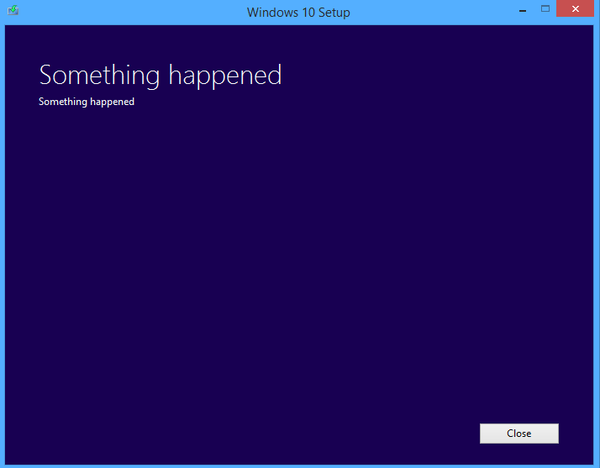Writing Useful Error Messages - Resources and Ideas
31 May 2016Writing a useful error message is tricky. Striking the right balance of presenting useful information to people while explaining what the error was and, more importantly, what they can do about it is not an easy thing to do, especially when looking to automate/template these type of interactions.
 Windows 10 Error Message - Please don’t do this ツ
Windows 10 Error Message - Please don’t do this ツ
Try to Avoid Using Error Messages
The ideal goal is to not need to use error messages at all. Look instead to design what Don Norman calls a ‘collaborative’ system, tell the user the requirements before they do the work. If there are special ways you want user to enter content/data into a system tell the user before they enter it, not afterwards.
If You Do need to Display Error Messages
Where Error Messages are used try to ensure they sound like they’ve been written for real people to understand and not using incomprehensible, ‘machine code’ style message.
Think of the error message as a conversation with the person using the system. Make it polite, understandable, friendly & jargon-free. The goal is to write an actionable error message that anyone could understand.
Ensure the error message is visible in regard to message size, colour & location. If the person can’t see the error message they will have trouble acting upon it. It needs to be specific as to what the problem is and help the user recover. Explain what they need to do next and how can they get back to what they were doing.
An Example Error Message
A useful error message template, based off the above guidelines looks like this;
[What has happened in plain, jargon-free language]
[What the user can do to continue with their task]
[Who the user can contact (including named person, email address, phone number, etc. where applicable) for assistance]Error Message Writing Resources
The Guidelines above are based on a few useful resources I’ve found when researching writing useful error messages.
Don Norman writes about using ‘collaborative’, rather then ‘error’, messages here
Ben Rowe gives 4 useful tips in this UXMas article on error messages
Some great error message writing tips in this article by Thomas Fuchs
Steven Hoober talks here on how error messages are an anti-pattern
Again on UX Matters - Caroline Jarrett explains how not to be embarrassed by your error messages
and finally;
NN/Groups Jakob Neilson offers some useful error message writing guidelines